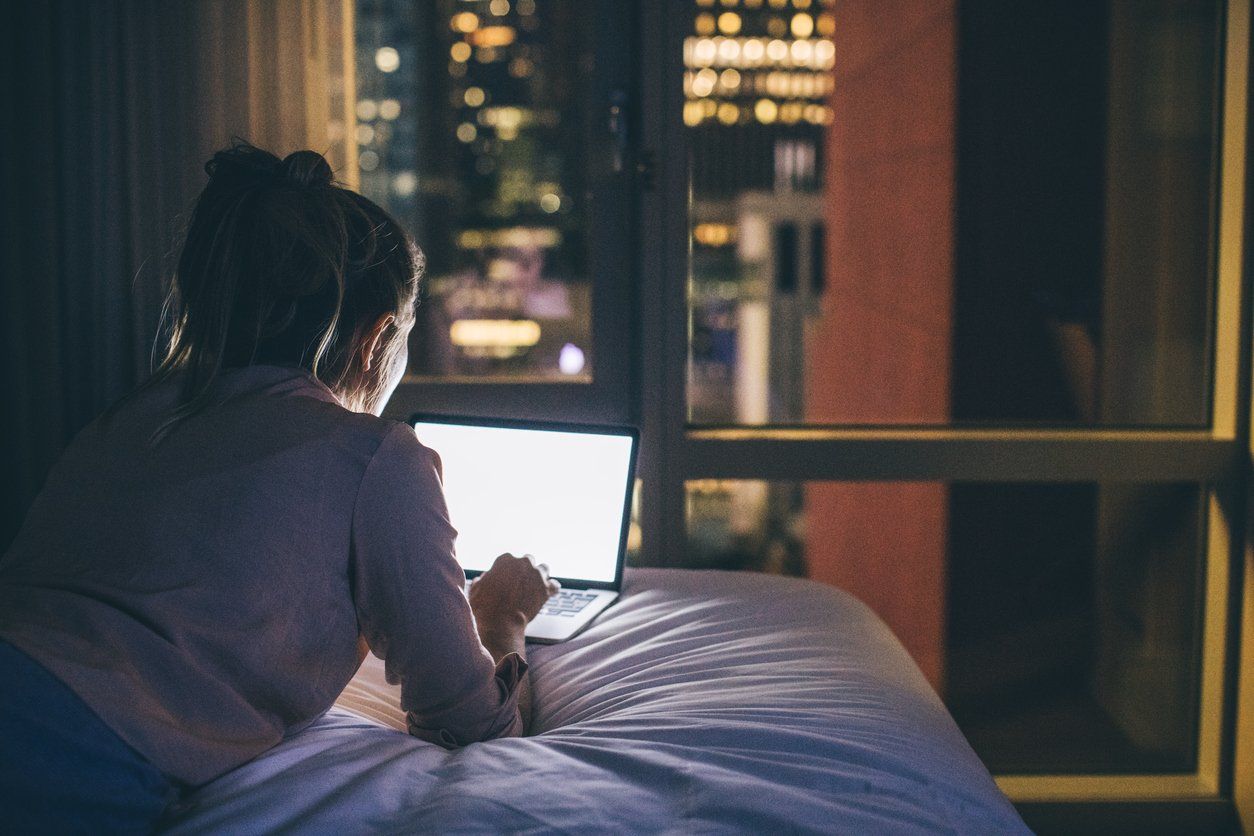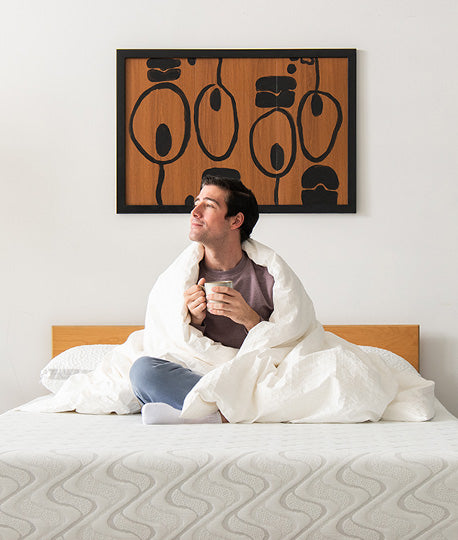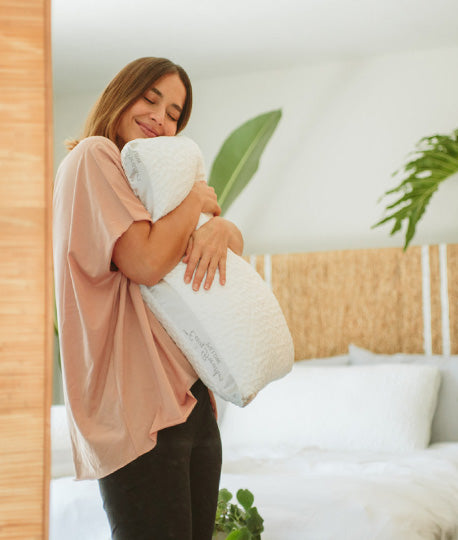6 Tips For Fighting the Blue Light Syndrome Before You Fall Asleep


By now, it's common knowledge how much damage the light emanating from our smartphones, tablets, and computers are doing to our sleep rhythms. They're called circadian rhythms, and they center almost totally on the brain, which schedules the body for sleeping, waking, eating, and much more.
Hormones tell the brain which systems need an update, which methods are ready for the next level, and which systems can wait a bit until they update. The mind and the hormonal activity work hand in hand to keep the body on track.
When it comes to sleeping and waking, the hormones melatonin and serotonin get involved:
- Melatonin alerts the body that it's time to sleep.
- Serotonin alerts the body that it's time to wake up.
These can be suppressed, however, which confuses the brain and the body. The result is that we can't sleep when we should.
When the body doesn't get enough sleep or sleep at all, then it can't function well the next day. Rest allows the body to heal, to file away information obtained during the day, tuck away memories that were made during the day, and clean the slate for the mind and body to do the same the next day.
The body is aware that when night falls, it should be preparing for sleep. It's when yawns, stretches, heavy eyes, and lolling heads happen. However, when bright lights emit blue rays from electronics, the brain thinks it's still daylight. It makes the melatonin not kick in because the body thinks it's the day.
That's the most direct explanation of the problem. But what is the answer? Glad you asked.
Here are six tips to kick the blue light syndrome and get some sleep.
1. Download F.Lux
This app is for laptops and desktop computers mirrors the light hitting the body. For example, the user will set the time they usually wake up in their city. The app takes it from there, adjusting the light of the computer according to the time of day. It will be perfectly reasonable during the day, but when night comes, it will adapt itself to the ambient light in the home. It’s an easy way to reduce the blue light at night. The warmer light after sunset helps your body prepare for sleep.
2. Put The Electronics In Another Room
If the "home office" is a table and chair in the corner of the bedroom, then that's okay for daytime. At night, however, unplug everything and place it in a closet or another room. Do this two hours before bedtime. It takes that long for the body to understand that the light is gone, and it's time for beddy-bye time. The melatonin will see that and do its own thing to put you to sleep.
3. Exercise
If you need something to do during those two hours after you've put away the electronics, then lace up those sneakers and do some training. You can walk around the block, do jumping jacks, dance to your favorite music, or bench press the kids. Whatever you can do to get the heart pumping oxygenated blood through the body is a good thing.
It has two significant effects on the body. Can you sleep after vigorous exercise? Yes. The heart is pumping, and the euphoria of those endorphins is rocking you. On the other hand, you'll be tired enough to drop onto the pillows. You won't be worrying about not sleeping, and you'll look great!
Before sunset is the best time to exercise. However, if you want to sleep, exercise between two and four hours before bedtime. Get rid of the sweat in a good hot soaking tub and read a little to unwind. Bet you'll fall asleep in no time.
4. I Wear My Sunglasses At Night
Thanks to Cory Hart for singing a song that gave us the idea. Wearing orange sunglasses to counteract the blue light at night while the computer and smartphone are close to our faces may feel strange at first, but it's a capital idea. They block the blue light spectrum from our vision and give the brain and melatonin a chance to work correctly. Orange lamps such as Himalayan salt lamps perform the same service.
This phenomenon has only been around less than 50 years. Before that, firelight, candlelight, moonlight, and sunlight told us when to awaken and when to sleep. Commercial light bulbs didn't pose the same threat to our brains. They could be turned on and off at the appropriate times. Our minds knew to go to sleep when it was "lights out."
5. Make Sure It's Dark In The Bedroom
Making sure it's pitch black in the bedroom is another way of cheating the blue light syndrome. Blackout curtains don't cost too much, especially if you check eBay and Amazon. If that isn't an option, try a sleeping mask. You can make one cheaply by cutting out the shape of the eye mask in a piece of thick black cloth. Just sew some yarn or heavy thread to the mask, and you should sleep like a baby.
Make sure all the lights in the house are off, or at least the lights closest to your bedroom. Dr. Mercola instructs us that since light can be seen through the eyelids, that even a small amount of light can cause a 50 percent reduction in melatonin production. So think black.
6. Check The Temperature
Many experts ask that those who have trouble sleeping take a hot bath at least an hour to two hours before bedtime. The heat of the water raises the body temperature. Getting out of the tub drops that temperature like a rock. It signals the body that it's time to get some shut-eye.
The temperature in the bedroom is essential as well. It is generally accepted that room temperature during sleep should be between 60 and 68 degrees Fahrenheit. Most homes only have one heating and cooling unit, which is usually between 68 and 72 degrees. Get a box fan or a ceiling fan or both to drop the temperature in the bedroom to one conducive to good sleep.
We know all about sleep, so feel free to contact us to learn more about getting rid of that blue light at night to fall asleep like a pro.



